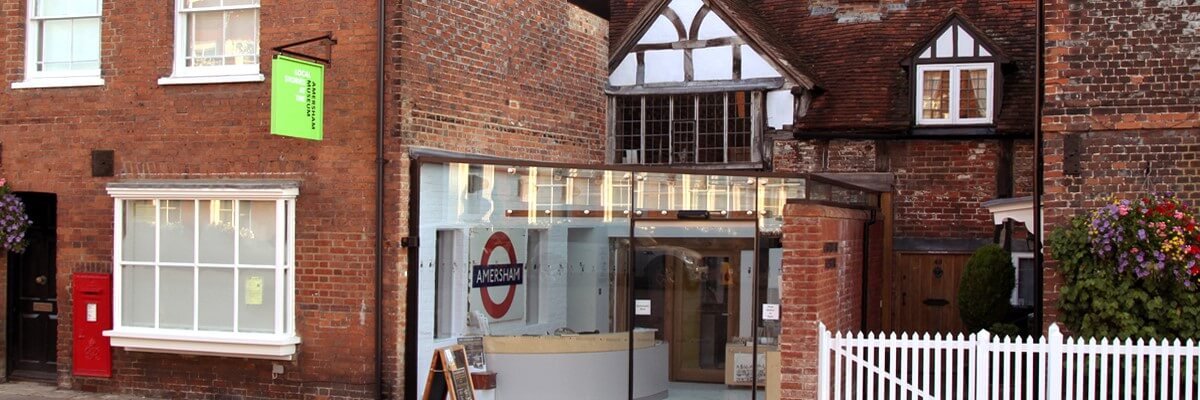Naval Intelligence at Latimer House in WW2
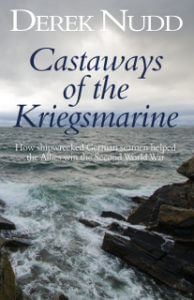 This article is written by Derek Nudd, the author of Castaways of the Kriegsmarine (available from Amazon), which sheds more light on the wartime history of Latimer House. Derek’s grandfather, Commander Cope, headed the Naval Intelligence Section at Latimer.
This article is written by Derek Nudd, the author of Castaways of the Kriegsmarine (available from Amazon), which sheds more light on the wartime history of Latimer House. Derek’s grandfather, Commander Cope, headed the Naval Intelligence Section at Latimer.
December 1943 brought little cheer to the crews of Hitler’s navy, the Kriegsmarine. As Mediterranean U-boats threw themselves into ever more desperately hopeless sorties against allied convoys a short, vicious battle in the Bay of Biscay sank the blockade runner Alsterufer and three of the escorts trying to bring her in. On Boxing Day the battle-cruiser Scharnhorst met her lonely end in the heaving, freezing waters of the Barents Sea off North Cape. The survivors thought their war was over when they were hauled from the sea. In truth they were just entering a murky world of eavesdropping, deceit and betrayal. At the two Buckinghamshire country houses of Latimer House and Wilton Park, teams from Naval, army and Air Intelligence were preparing for the arrival of the bedraggled captives. The clandestine unit was called Combined Services Detailed Interrogation Centre (CSDIC).
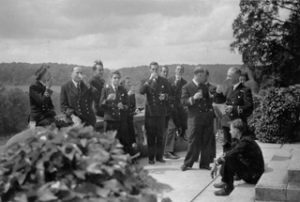
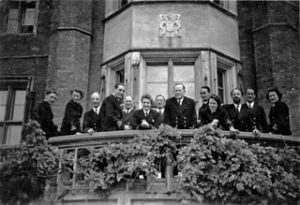
The Naval Intelligence team was a small, eclectic and irreverent band of reservists and Wrens. It swelled from three officers and a civilian assistant in December 1940 to thirteen Naval and Marine officers, five Wren officers and six Wren other ranks by November 1944. It included a few salt-stained veterans of Atlantic convoy duty but mainly comprised ‘Special Service’ reservists: landlubbers with relevant skills.
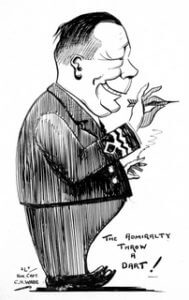
Their leader, Lieutenant-Commander Cope, was the multi-lingual, Munich-born son of a stained-glass painter and had served as a naval interrogator in the Great War. Others included an artist, a diplomat, two journalists and an increasingly vital cast of engineers.
However un-warlike their background the interrogators were expected to familiarise themselves with HMS Graph, formerly U 570, the better to understand their unwilling ‘guests’ habitat. From 1941 they were assisted by Wren (Women’s Royal Naval Service) staff, initially for clerical duties but later taking over analysis and reporting to the benefit of the unit’s presentation and credibility.
The naval interrogators were after one thing: the intelligence which prisoners could yield into the merciless arena of ocean combat. Raw data and rumour from the bugged conversations in their cells became vital intelligence for strategists and fighting sailors, and made a vital contribution to ultimate victory. At Latimer, the prisoners were watched by the psychologists analysing opinion surveys to direct and focus propaganda beamed at the enemy.
The interrogators had three main tools: direct interrogation, stool-pigeons and covert listening. Direct interrogation relied heavily on the interrogator conveying an impression of omniscience so that the subject felt there was no point in holding anything back. Respect for rank could also be exploited – staff kept a selection of jackets with different insignia for that purpose – as could a variety of psychological pressures. The toolbox didn’t include physical violence, not necessarily from ethical scruples but through fear that it might jeopardise British prisoners in Axis hands. NID experimented with drugs at the beginning of the war, using volunteer guinea-pigs, but concluded that they didn’t work well enough and there was no way to prevent the subjects realising, then or later, what had happened.
The relatively small Naval Intelligence team at Latimer facing a constant flow of captives had little time to spare for each. One way of managing the workload was systematically to ‘dump’ prisoners to regular internment camps as soon as it became clear they had nothing more to contribute. Another was to use direct interrogation largely as pump-priming for later conversations in the supposed privacy of their cells. Few could resist bragging about how they had put one over on the daft Englishman, or warning their shipmate about subjects to avoid. Residents were also given newspapers to stimulate discussion and paper, on which they surprisingly often sketched what they were talking about.
How the secret listeners eavesdropped on prisoner conversations via microphones hidden in the light fittings is told in more detail by historian Helen Fry in her book The M Room: Secret Listeners who Bugged the Nazis. A listener monitored a pair of cells until the conversation in one took an interesting turn, then recorded it as long as the topic stayed relevant, and handed over to a colleague while he went away to transcribe it. Many of the transcriptions survive for their voices to be heard again since they were declassified early this century.
Not even careful topic seeding in the interviews could be relied on to lead cell talk in the right direction. Also the hectic pace of a technological war too easily overwhelmed a non-specialist listener when two engineers started talking shop. This is where stool-pigeons (informers) came in. Initially four full-time stool-pigeons were selected from 93 refugee volunteers. They were intensively coached in the skills needed to pass themselves off as German servicemen and mixed with prisoners – at first with variable success. As time passed they were supplemented by genuine survivors who had decided for one reason or another to throw their lot in with the Allies. They were briefed on the information required and partnered with unsuspecting subjects, sometimes two to one, to lead conversation in the desired direction and then report back while being ‘interrogated.’ Most didn’t know about the microphones, which acted as a useful check on their honesty.
So, what did the naval team actually achieve? At first the mass of dubious or irrelevant material tended to obscure vitally relevant results. As Edmund Rushbrooke, Director of Naval Intelligence, observed: ‘There are always people who regard Intelligence as a Cinderella. They will be converted only when they have found in practice that she makes a good partner at the ball.’
Their discovery that U-boats could dive below the maximum setting of British depth charges was not believed until the after the capture and evaluation of U 570 in 1941. Similarly their warnings that the Kriegsmarine’s B-Dienst cryptographic section had broken the British convoy code, and that Narvik class destroyers had six-inch gun armament, were ignored.
The Cassandra effect faded with experience. Prisoners’ information allowed the Allies to anticipate German moves in the technological chess game of the Battle of the Atlantic. When the T5 homing torpedo was first used in September 1943 there had been enough advance warning to develop both physical and tactical countermeasures. Operator-level knowledge of German radar warning receivers allowed aircrew to preserve the element of surprise in attack and, as importantly, kept U-boat crews off-balance. Garbled reports of revolutionary submarine technologies under development forestalled Allied complacency when reconnaissance revealed a slowdown in conventional U-boat build; the German navy had not given up. Gossip fed back through BBC radio tweaked spy paranoia across the Third Reich Empire.
Naval Intelligence Division, apart from being arguably the most effective of the British service intelligence branches, was intimately involved in the only campaign that lasted from the first day of the war to the last, and the only one which could alone have handed the Nazis victory: the U-boat struggle. In the cramped, airless Operational Intelligence Centre and the adjoining Submarine Tracking Room under the Admiralty exhausted men and women synthesised all the information available to them – including from prisoners-of-war – in a desperate, multifaceted, intelligence-led chess game played on both strategic and tactical levels. A pawn taken from the board meant choking, burning, drowning death, somewhere in the merciless ocean.
Perhaps Rushbrooke should have the final word, in his parting tribute when Lieutenant-Commander Cope moved on to another posting: ‘During five years of war the interrogation of prisoners of war has been developed from an incidental source of Intelligence to one of unique value; the Royal Navy and other Services have become reliant upon it; and this result is largely due to the persistent and imaginative effort of yourself and your team at Cockfosters and Latimer.’
The London Cage Revealed
 This article was written by Helen Fry, the author of The London Cage: The Secret History of Britain’s WWII Interrogation Centre (Yale University Press: 2017). See also her article about Latimer House.
This article was written by Helen Fry, the author of The London Cage: The Secret History of Britain’s WWII Interrogation Centre (Yale University Press: 2017). See also her article about Latimer House.
The Dell in Bourne End, Buckinghamshire is a modest address that has never attracted any attention in the public eye. But during the Second World War and afterwards, it was the home of Colonel Alexander Paterson Scotland and his wife.
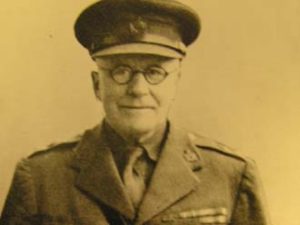
Scotland was the nephew of famed Nobel Prize playwright George Bernard Shaw, a member of the Intelligence Corps and very private man whose wartime work was highly classified. As his chauffeur came to pick him up daily in a military car, the neighbours could scarcely suspect his role in the higher echelons of British military intelligence. Some days he travelled to nearby Wilton Park in Beaconsfield where from 1941 the intelligence service MI9 had relocated its headquarters under Brigadier Norman Crockatt who himself lived at Ashley Green. MI9 had two main sections: one that aided Allied prisoners of war in the art of escape and evasion (and from Wilton Park numerous escape gadgets were invented to send into POW camps in Germany), and another section which dealt with captured German prisoners of war. Most days, Scotland travelled into London where he headed a clandestine interrogation centre for MI9, rumoured to have a nasty history.
It was in October 1940 that the War Office requisitioned three luxury mansion houses in Kensington Palace Gardens to open a secret interrogation unit known as the London Cage, run under the auspices of MI9 (later MI19). Located in gated ‘Millionaires’ Row’ and belonging to the Crown Estate, the street boasted one of the most exclusive and expensive residences in the capital and unlikeliest of locations to hold German prisoners-of-war. For the neighbours – the Russian Embassy tenanted next door and the wealthy magnates living in the other mansions – there was no inkling of what was going on behind the bravura Victorian façades of No.6-7, 8 and 8a Kensington Palace Gardens. Here the prisoners, who could not be broken under normal conditions of interrogation at any of the other eight ‘cages’ in Britain, were subjected to ‘special intelligence treatment’, designed to break their will to resist. As a transit camp, the London Cage should have appeared on the wartime lists of the Red Cross. It did not because officially it did not exist. The 70-year old Colonel Scotland, a tough maverick character, already had a reputation as ‘a man of strong personality with a formidable reputation as an interrogator.’ He set the cage rules and this is where the controversy emerged.
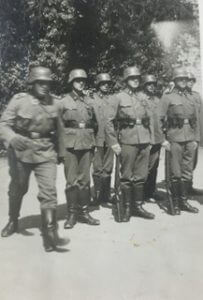
In the prison quarters at 8 and 8a Kensington Palace Gardens, any trace of the former glory of the house had long since disappeared. Rooms on the first floor were transformed into ‘cells’, with cold bare floors, a single bed, a chair and chamber pot. Life was run on strict discipline, enforced by guards from the Scottish and Irish Guard Division. Close examination of declassified files now reveals that a very different picture emerges of the grim world in the basement where the five interrogation rooms were located. Out of bounds to most cage personnel, it was here that contraventions of the Geneva Convention were alleged to have taken place. The interrogators had one primarily objective: ‘to assist MI6 and MI5 in gaining information by interrogating special suspects whose examination under military conditions offered to yield results.’ Soon, mistreatment of uncooperative prisoners extended to a variety of methods usually associated with Soviet Russia: both physical and psychological, including the threat of ‘Cell 14’.

Within six months of opening, the London Cage became embroiled in an internal heated controversy between MI5 and MI6 over the use of violence and unorthodox methods during interrogations. Scotland’s early prisoners were U-boat crew and German air force personnel who potentially had valuable operational intelligence, but also details of new advanced German technological developments in weaponry and military equipment. The stakes were high. Britain needed the information which German prisoners had in their head, knowledge which could affect the outcome of the war. Did the ends justify the means?
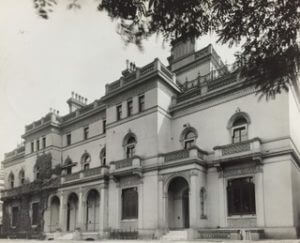
Scotland had made a scheduled visit to Camp 020, the covert MI5 interrogation of Latchmere House at Ham, near Richmond. Camp 020 housed captured German spies who were ‘turned’ to work as double agents for the British as part of the famous Double Cross System. It was there that Scotland struck a prisoner during interrogation. The MI5 Commandant, Lieutenant Colonel Stephens, banned him from visiting the place again, but ironically Stephens too would face similar allegations at a site in post-war Germany (No.74 CSDIC at Bad Nenndorf). Revelations of physical abuse at the London Cage are controversial enough, but something far more sinister emerges – that Scotland was experimenting with ‘truth drugs’. Already on the visit to Camp 020, he was caught wielding a syringe of truth serum, poised to inject a prisoner. Was he a maverick acting alone or with the sanction of the intelligence services? How did this tie in with the experimental use of truth drugs by Naval Intelligence and MI6 at this time?
For all the controversy that continues to surround methods of interrogation (brought again to the fore in recent times by Donald Trump – i.e. water-boarding), it is easy to forget that from 1945 until 1948, the London Cage became the War Crimes Investigation Unit and ‘the most important such centre outside Germany’. Many high ranking Nazi war criminals and SS officers passed through its doors, having been hunted down by Scotland’s own specialist teams roaming Europe to bring them out of hiding. Without Scotland’s dedicated teams there would have been no justice in their cases. Amongst them were commandants from the liberated concentration camps, also SS General Sepp Dietrich, General Kurt Meyer, General Manstein, General von Falkenhorst, SS Colonel General Brochardt, Field Marshal Kesselring and Field Marshal von Rundstedt. One of the most loathed prisoners ever to cross the London Cage was SS General Fritz Knochlein, responsible for the slaughter in cold blood of 124 surrendering British soldiers at Paradis in France in July 1940. He was described by Colonel Scotland as ‘a Nazi of the first order, the worst order, a German who had dedicated himself to brutality; irresponsible in the possession of power, ruthless in execution.’ The London Cage also examined the major war crime committed at Stalag Luft III where 74 Allied airmen tunnelled out of the camp, known as “The Great Escape” and immortalised in the famous film.
Claims of brutality, use of torture and psychological abuse surfaced again against the London Cage – this time very publicly during the war crimes trials – and Scotland faced serious charges that threatened to derail the Prosecution’s case against the war criminals. The accusations extended to beatings, trampling on fingers, kicking, using a hippopotamus whip (a shambok), using an electric device to extract confessions, and allegedly alluding to the fact that prisoners could ‘vanish without trace’. When the International Red Cross sought entry in 1946, permission was firmly denied. Under oath in court, accusations of contravening the Geneva Convention were refuted by Colonel Scotland.

When the doors finally closed on 6-8 Kensington Palace Gardens in 1948, the intelligence services hoped that would be the end of the matter. But in the early 1950s, Scotland embarked on his memoirs in which he offered a detailed account of life in the cage that revealed unorthodox practices during the interrogation of German prisoners-of-war. The intelligence services were taking no chances – MI5 ordered all copies of the typed manuscript to be impounded by Special Branch. When the manuscript arrived back at MI5 headquarters and the Foreign Office, the introductory sentence to his second chapter caused alarm. ‘Abandon hope all ye who enter here,’ he wrote. MI5 quickly consigned the copies to a basement at the War Office ‘Under Lock and Key’. Scotland himself was threatened with arrest under the Official Secrets Act if he published a single word. But the War Office knew it could not hold out for long. The memoirs could be published in America and the fall-out felt across the Atlantic. A deal was struck and Scotland was able to publish a heavily redacted version of his book in 1957. The intelligence services had everything to lose from revelations about methods used during interrogation. This was at a sensitive time in the Cold War when tensions were already heightened between East and West. What ended up on the cutting room floor was at least half of the manuscript, including all examples of methods of interrogation, anecdotal stories about specific prisoners, examples of conversations with prisoners, and life generally inside the cage. Scotland withheld any mention of truth drugs and certain methods of torture. He quietly retired, occasionally attending military reunions with his former colleagues. By the 1950s he and Roma moved from The Dell in Bourne End to a smart flat at 19 Clarence Gate Gardens near Regents Park. He died a widower in a nursing home on 3 July 1965, quite a wealthy man: leaving an estate valued at £13,254.
When the official files for the London Cage were finally released into the National Archives in the 1990s, some were clearly missing and subsequently confirmed by the Ministry of Defence to be ‘contaminated by asbestos and destroyed by flood water’. It heightened speculation about what was being withheld by the government. Today, No.6-7 Kensington Palace Gardens is the Russian Embassy with no trace of its clandestine wartime role. Occasionally the street makes headline news, as after the British verdict on the murder of Russian dissident and spy Alexander Litvinenko when a Russian official appeared outside the Embassy to issue a statement to the media.
Yet even today, there is a sensitivity in official circles about any mention of the London Cage, especially the four suicides whose names have never been released by the government or the Coroner’s Office. Why the secrecy? But, in an era when democracy is threatened by global terrorism, perhaps it really isn’t the time to open a public debate on appropriate methods of interrogation for our times.
Helen Fry is currently researching and writing a book on the history of MI9: escape and evasion, which will include material on Wilton Park in WWII, for publication in 2019.

